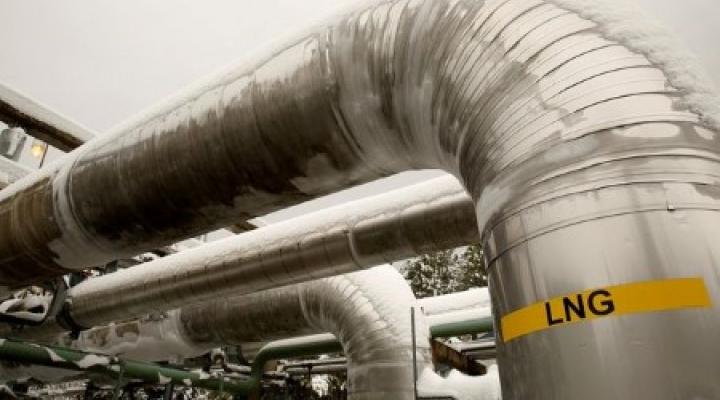U.S. natural gas futures jumped about 5% to a one-week high on Friday on forecasts for more demand next week than previously expected with rising amounts of gas flowing to liquefied natural gas (LNG) export plants, but they remained on track to drop by a record 51% this quarter.

Source: Reuters
Feedgas to those LNG export plants climbed after Freeport LNG’s facility in Texas exited an eight-month outage in February and returned to near full power this week. Freeport LNG shut in June 2022 after a fire.
The quarterly price drop came on rising output and mostly mild weather so far this winter that kept heating demand low and allowed utilities to leave more gas in storage than usual.
Front-month gas futures NGc1 for May delivery on the New York Mercantile Exchange (NYMEX) rose 10.1 cents, or 4.8%, to $2.205 per million British thermal units at 9:17 a.m. EDT (1317 GMT), putting the contract on track for its highest close since March 24.
Despite Friday’s gain, the front-month was still down about 1% for the week, 20% for the month and 51% for the quarter. That would be the contract’s biggest quarterly drop on record, topping the current record loss of 49% during the first quarter of 2001.
The market has been extremely volatile this month, with the front-month gaining or losing more than 5% on 10 of the past 22 trading days.
With gas market volatility rising in recent weeks, open interest in gas futures on the NYMEX rose to 1.32 million contracts on Thursday, the highest since October 2021. Open interest in the front-month contract alone rose to over 380,200 contracts on Thursday, the most since March 2020.
Freeport LNG‘s export plant was on track to pull in about 2.0 billion cubic feet per day (bcfd) of gas on Friday, up from 1.5 bcfd on Thursday, according to data provider Refinitiv.
Energy traders said that was a sure sign that Freeport LNG was back near full power since the plant can turn about 2.1 bcfd of gas into LNG for export when operating at full power.
Another U.S. LNG company, Venture Global LNG, meanwhile, told federal energy regulators this week that it would continue to work on its 1.6-bcfd Calcasieu Pass export plant in Louisiana before it enters full commercial operations.
Analysts, however, noted that the work at Calcasieu will likely not have much impact on total U.S. LNG exports since the plant was already conducting some of the work and gas flows have averaged about 1.4 bcfd so far in March.
Total gas flows to all seven big U.S. LNG export plants, including Freeport LNG and Calcasieu, rose to an average of 13.2 bcfd so far in March, up from 12.8 bcfd in February. That would top the monthly record of 12.9 bcfd in March 2022, before Freeport LNG shut.
The seven big U.S. LNG export plants can turn about 13.8 bcfd of gas into LNG.
SUPPLY AND DEMAND
Refinitiv said average gas output in the U.S. Lower 48 states rose to 98.6 bcfd so far in March, up from 98.1 bcfd in February. The monthly record is 99.9 bcfd in November 2022.
Meteorologists projected the weather in the Lower 48 states would remain mostly near normal through April 13.
With warmer spring-like weather expected to keep reducing the amount of gas burned to heat homes and businesses, Refinitiv forecast U.S. gas demand, including exports, would drop from 110.6 bcfd this week to 104.1 bcfd next week and 103.8 bcfd in two weeks. The forecast for next week was higher than Refinitiv’s outlook on Thursday.
Mild winter weather allowed utilities to leave more gas in storage so far this year and should let them start injecting fuel into inventories at the beginning of April.
Gas stockpiles were about 21% above their five-year average (2018-2022) during the week ended March 24 and were expected to end about 20% above normal during the colder-than-normal week ended March 31, according to federal data and analysts’ estimates. EIA/GASNGAS/POLL

